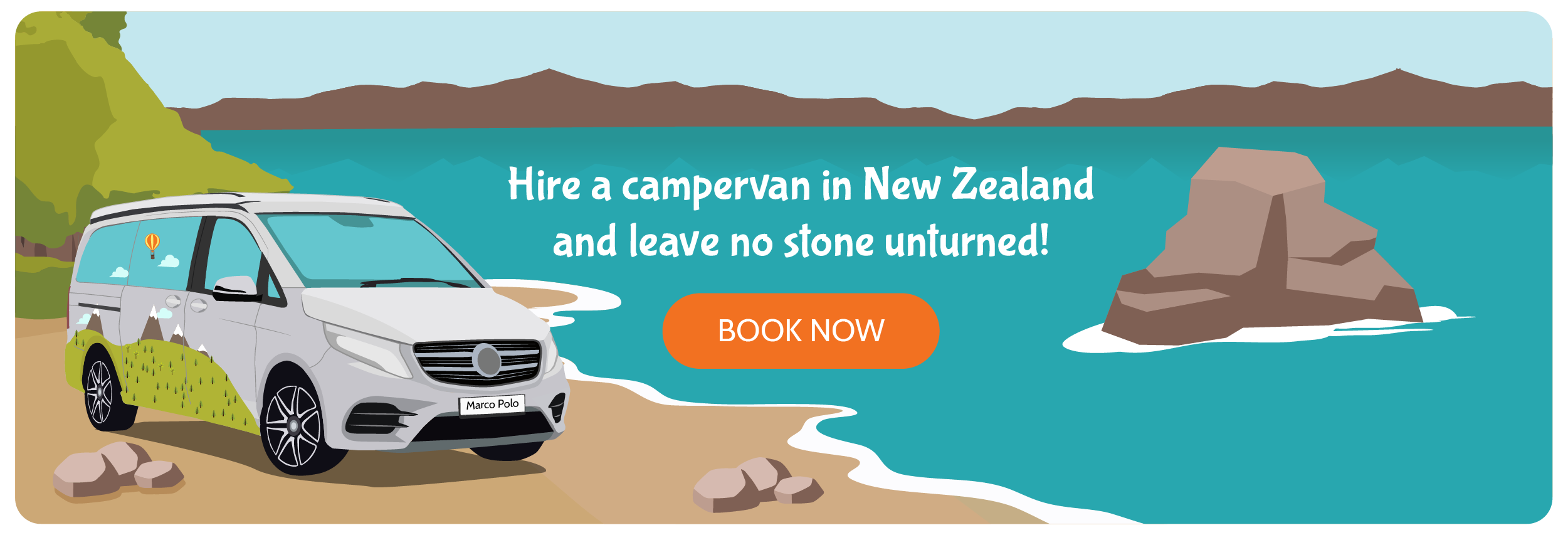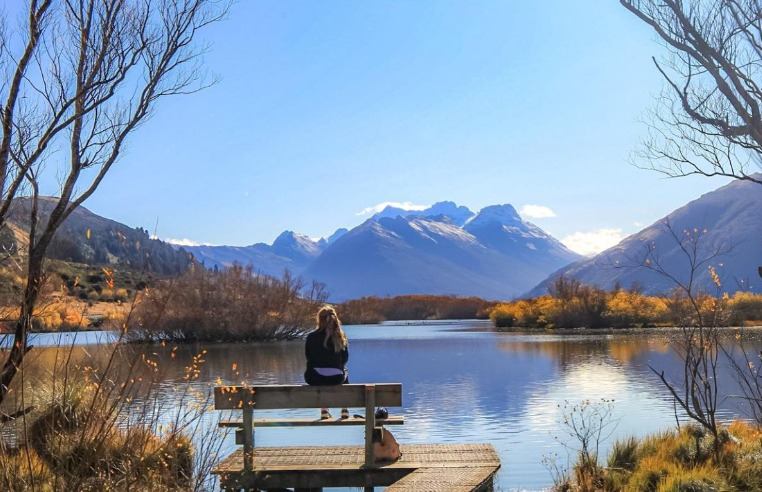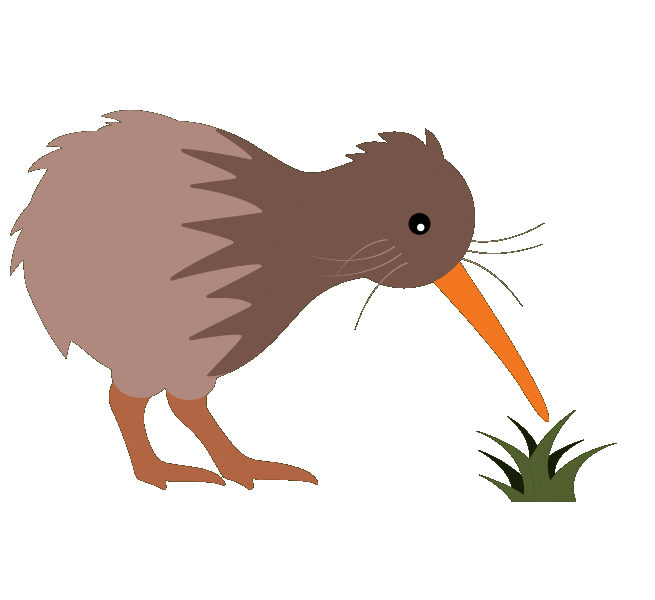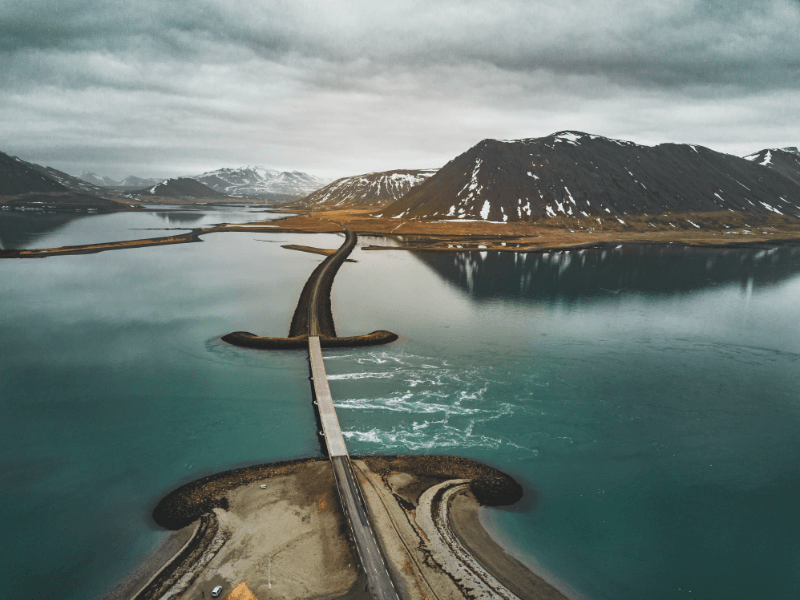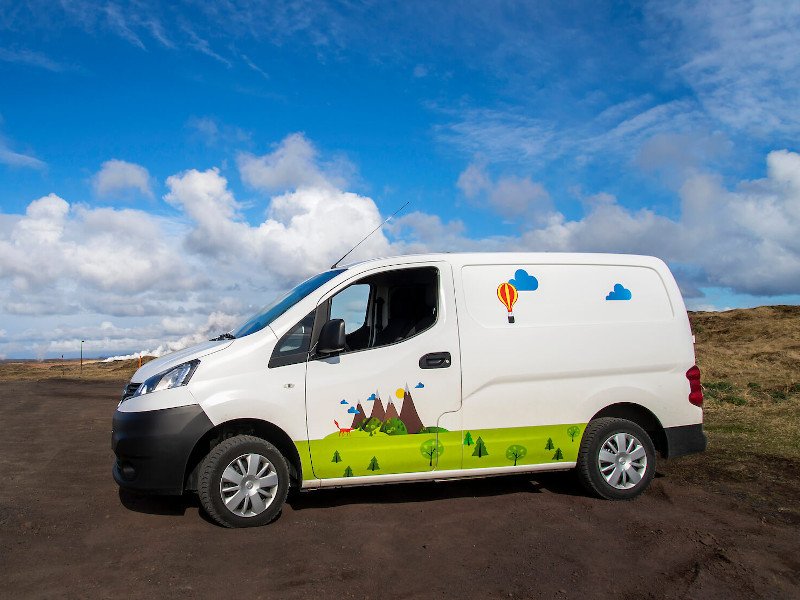New Zealand, a land of breathtaking landscapes, is also a haven for marine enthusiasts. With its vast coastline and unique marine life, it's no wonder that whale watching has become one of the most sought-after activities for both locals and tourists. If you've ever dreamt of witnessing these majestic creatures in their natural habitat, New Zealand is the place to be.
Best places to go whale watching in New Zealand
Kaikoura
Kaikoura is the crown jewel of whale watching in New Zealand. Located on the east coast of the South Island, it boasts a unique underwater topography with deep-sea canyons close to the shore. This, combined with the confluence of warm and cold ocean currents, creates a rich feeding ground attracting marine life, especially sperm whales.
While sperm whales can be seen year-round, the kaikoura whale watching season also brings orcas from December to March and humpback whales in June and July. Apart from whales, dusky dolphins, fur seals, and albatrosses can also be spotted, making it a marine enthusiast's paradise.

Bay of Islands
The Bay of Islands is a picturesque archipelago consisting of 144 islands. While it's renowned for its stunning beaches and vibrant marine life, it's also a great spot for watching orcas and playful dolphins.
The serene waters provide a tranquil backdrop, making the experience even more enchanting. Whether you're on a boat tour or kayaking, the Bay of Islands promises a memorable marine adventure.
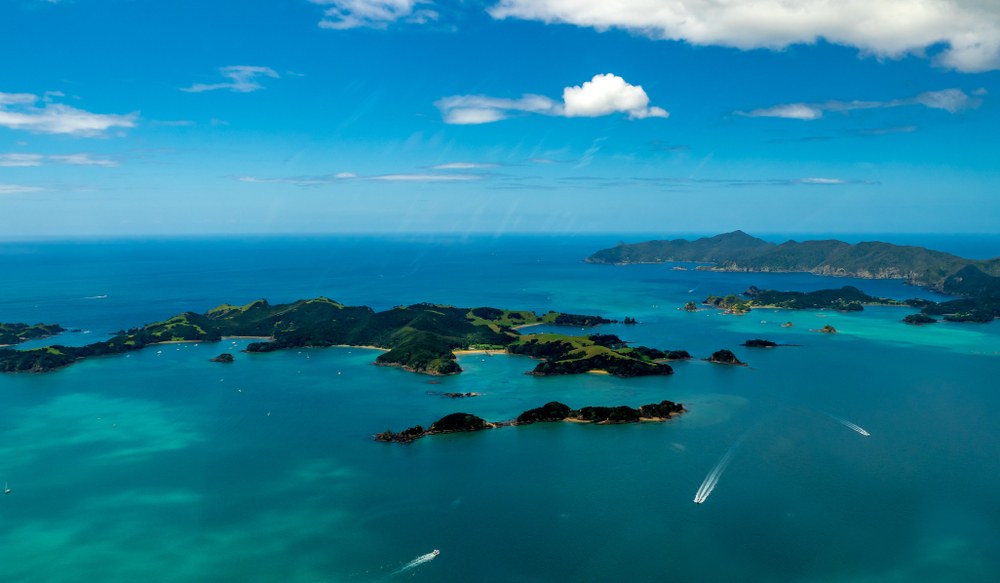
Auckland
Auckland's Hauraki Gulf is a marine park that spans 1.2 million hectares of ocean. It's home to a diverse range of marine species, with over 25 of the 37 southern hemisphere marine mammals identified here. From Bryde's whales to common dolphins, the gulf is a marine lover's dream.
The best time for whale watching in Auckland is during the summer months when the marine activity is at its peak.

Wellington
While Wellington is often associated with its vibrant arts scene and the iconic Te Papa museum, its coastal waters are a hidden gem for whale watchers. The deep waters off the coast are frequented by various whale species, including the rare sei whales.
Additionally, the Wellington whale and dolphin watch tours offer opportunities to spot orcas, especially during their migration season.

Dunedin
Dunedin, with its rugged coastline and cold waters, offers a unique whale-watching experience. The Otago Peninsula, close to Dunedin, is a hotspot for marine life. From the world's smallest penguins to the majestic southern right whales, the diversity is astounding.
The whale watching Dunedin tours often come with the added bonus of spotting New Zealand sea lions and yellow-eyed penguins.
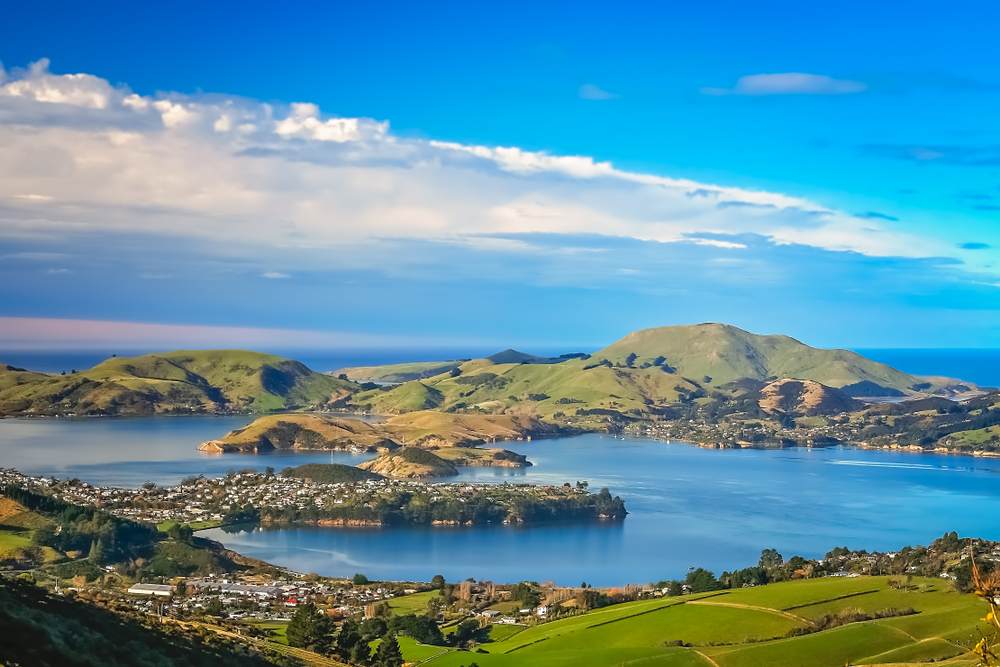
When is the Best time to go whale watching in New Zealand?
Between June and August, humpback and southern right whales migrate along New Zealand's coastline. This period is optimal for whale-watching in the region. Despite this, each season can offer us things that we are going to comment on:
Summer (December to February)
Summer in New Zealand is characterized by warm waters, especially in regions like Auckland. This warmth attracts a myriad of marine life, making it an ideal time for whale and dolphin watching. In Auckland, there isn't a defined whale-watching season as some species, like the Bryde’s whale, are non-migratory and can be seen year-round.
The Hauraki Gulf Marine Park in Auckland is home to this Nationally Endangered species, making it one of the few places in the world where you can easily spot a baleen whale at any time of the year.
Autumn (March to May)
Autumn brings a change in the marine landscape. In places like Kaikoura, orcas are a common sight from December to March. However, as autumn progresses, humpback whales begin their migration, making them more frequent in the waters around New Zealand. These majestic creatures travel from the polar seas towards the equator at the start of winter to give birth and reproduce.
Winter (June to August)
Winter is a special time, especially in Kaikoura. The waters around New Zealand become a hub for humpback whales and sperm whales. During the migration season between June and August, humpback whales and southern right whales travel up New Zealand’s coast, offering a spectacular sight for whale watchers.
The cold months also bring with them stunning sunsets, making the experience even more magical.
Spring (September to November)
Spring is when the marine life starts preparing for the warmer months. While sperm whales can be spotted year-round in places like Kaikoura, the rare sperm whale coromandel begins its migration to warmer waters during this season. Additionally, other species of whales and dolphins can be seen more frequently as they gear up for the summer months.
In addition to the whales, the Hauraki Gulf is also home to a resident species of dolphin – the common dolphin. These playful creatures can be seen year-round, with their behavior varying based on the season. In warmer months, they are often seen resting, socializing, and playing, while in colder months, their primary focus is on feeding.
Different types of whales that can be seen in New Zealand
Humpback whales
Humpback whales are known for their majestic size and mesmerizing acrobatics. These gentle giants are often seen breaching and slapping the water with their fins. They migrate through New Zealand waters, especially during their annual journey from the cold Antarctic waters to the warmer tropical waters.

Sperm whales
Sperm whales are the largest of the toothed whales and are easily recognizable by their massive heads and prominent rounded foreheads. Kaikoura is a renowned spot for sperm whale sightings, thanks to the deep underwater canyons and abundant food supply. These whales can dive up to 3,280 feet in search of their favorite meal: giant squid.

Orcas (killer whales)
Orcas, also known as killer whales, are apex predators and are known for their striking black and white appearance. They are highly social and are often seen hunting in packs.
Their diet varies and can include fish, seals, and even other whales. Orcas are frequent visitors to New Zealand's coastal waters, especially around the Bay of Islands.

Minke whales
Minke whales are one of the smaller baleen whale species. They have a sleek body and are known for their curious nature. Often, they approach boats and display playful behavior, making them a favorite among whale watchers.
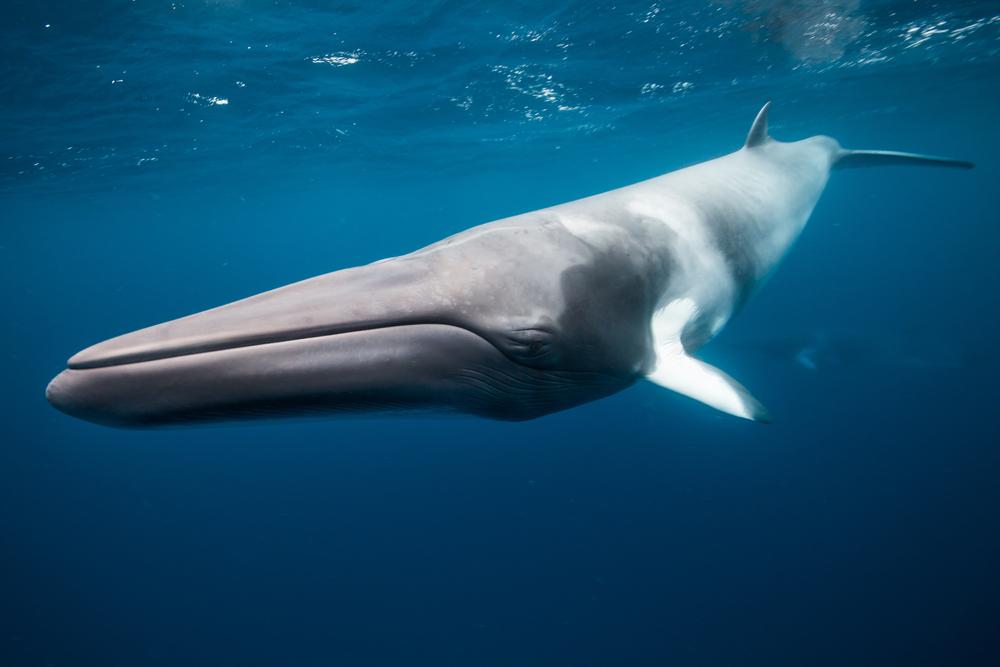
Southern right whales
Southern right whales are easily identifiable by their V-shaped blow and lack of a dorsal fin. They were once hunted to the brink of extinction but are now making a slow recovery. These whales are known to come close to the shore, especially around the South Island, providing an up-close experience for onlookers.

Sei whales
Sei whales are streamlined and have a dark steel-gray body with a paler underside. They are one of the fastest whale species and can reach speeds of up to 50 km/h. While they are a rare sight, lucky whale watchers might spot them in the waters around Wellington.

Bryde's whales
Bryde's whales are mainly found in Auckland's Hauraki Gulf. They are baleen whales and are known for their three prominent ridges on the top of their heads. These whales are critically endangered, making every sighting a special one.

What to expect on a whale watching tour
How long do the tours last?
Whale-watching tours typically last between 2 to 4 hours. The duration can vary based on the location, the tour operator's itinerary, and the day's sightings.
For instance, if whales are spotted early into the tour, you might spend more time observing them, whereas on days when they are elusive, the tour might extend in hopes of a sighting.
What type of boat will I be on?
The type of boat used for whale-watching tours can vary significantly based on the tour operator and the region. Some operators use large vessels equipped with multiple viewing decks, underwater viewing pods, and amenities like cafes.
These larger boats can offer a more stable experience, especially in rougher waters. On the other hand, some tours might use smaller boats or zodiacs, which can be more maneuverable and offer a closer-to-the-water experience. The choice of boat often depends on the operator's focus, whether it's on comfort, intimacy, or the ability to reach certain areas.

What will I see on the tour?
While the primary focus is on spotting whales, New Zealand's rich marine environment ensures that there's always something to see. Apart from various whale species, you can also expect to spot:
- Dolphins: Commonly seen species include the bottlenose, dusky, and common dolphins.
- Seals: New Zealand fur seals can often be seen lounging on rocks or swimming in the waters.
- Marine Birds: The coastal areas are home to various bird species, including albatrosses, petrels, and shearwaters.
What should I wear and bring?
When heading out on a whale-watching tour, it's essential to be prepared for varying weather conditions:
- Dress in Layers: The weather can change rapidly at sea, so it's a good idea to wear multiple layers that you can add or remove as needed.
- Sun Protection: Even on cloudy days, the sun's reflection off the water can be strong. Carry sunscreen, wear a hat, and consider sunglasses.
- Camera: You'll want to capture the majestic sights, so don't forget your camera. If you have binoculars, they can enhance the experience.
- Seasickness Medication: If you're prone to seasickness, consider taking medication before the tour or carrying it with you.
Tips for making the most of your whale-watching experience:
- Book in Advance: Whale-watching is a popular activity, especially during peak seasons. Booking in advance ensures you secure a spot.
- Arrive Early: Getting to the departure point early gives you a chance to choose a prime viewing spot on the boat.
- Patience is Key: Remember, whales are wild animals, and sightings aren't guaranteed. However, the anticipation and the eventual sighting make the wait worthwhile.
- Listen to the Guide: Tour guides are experienced and knowledgeable. They'll provide insights about the marine life and ensure safety protocols are followed.
- Savor the Moment: While spotting a whale is the highlight, the journey itself, with the vast ocean and surrounding beauty, is equally mesmerizing.
New Zealand offers a whale-watching experience like no other. The diverse marine life, pristine waters, and the thrill of spotting a whale in the wild is an experience to cherish. And while you're planning your trip, why not make it a road trip? Rent a campervan in New Zealand and explore New Zealand at your own pace. It's an adventure you won't forget!


 By
By


